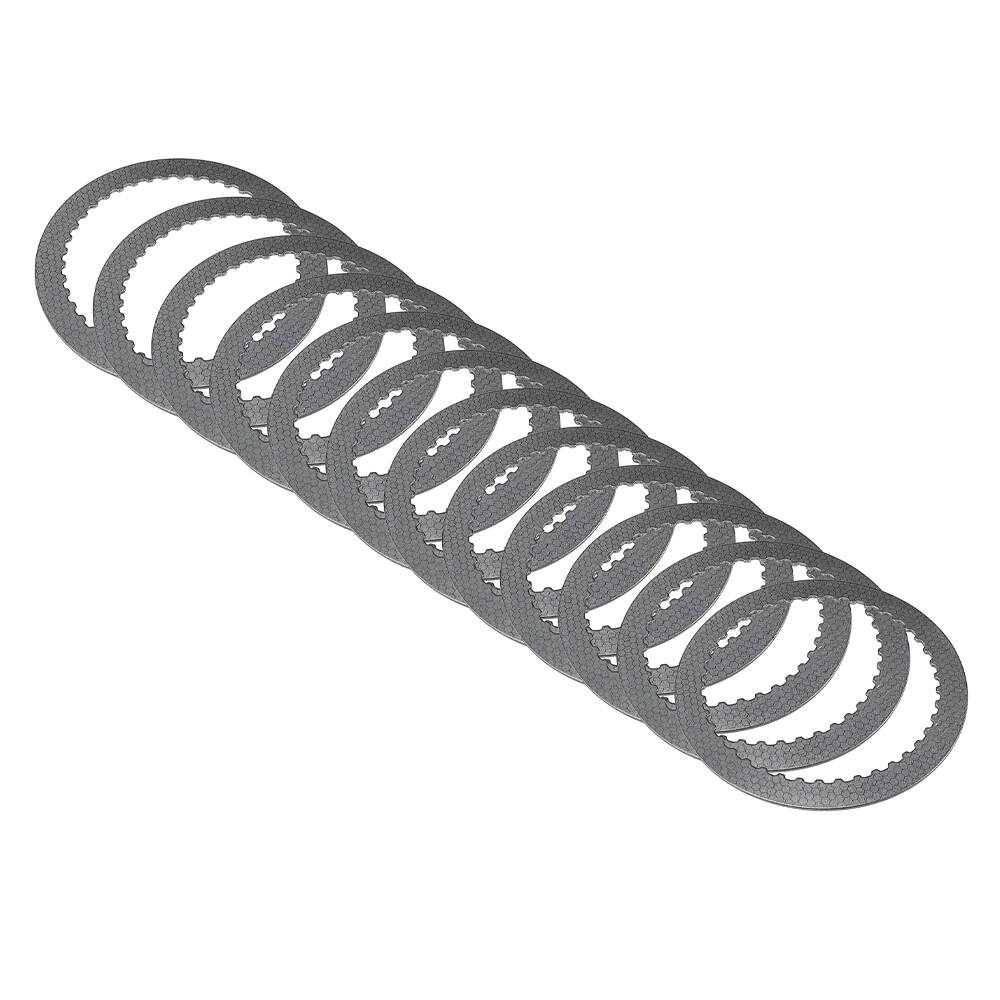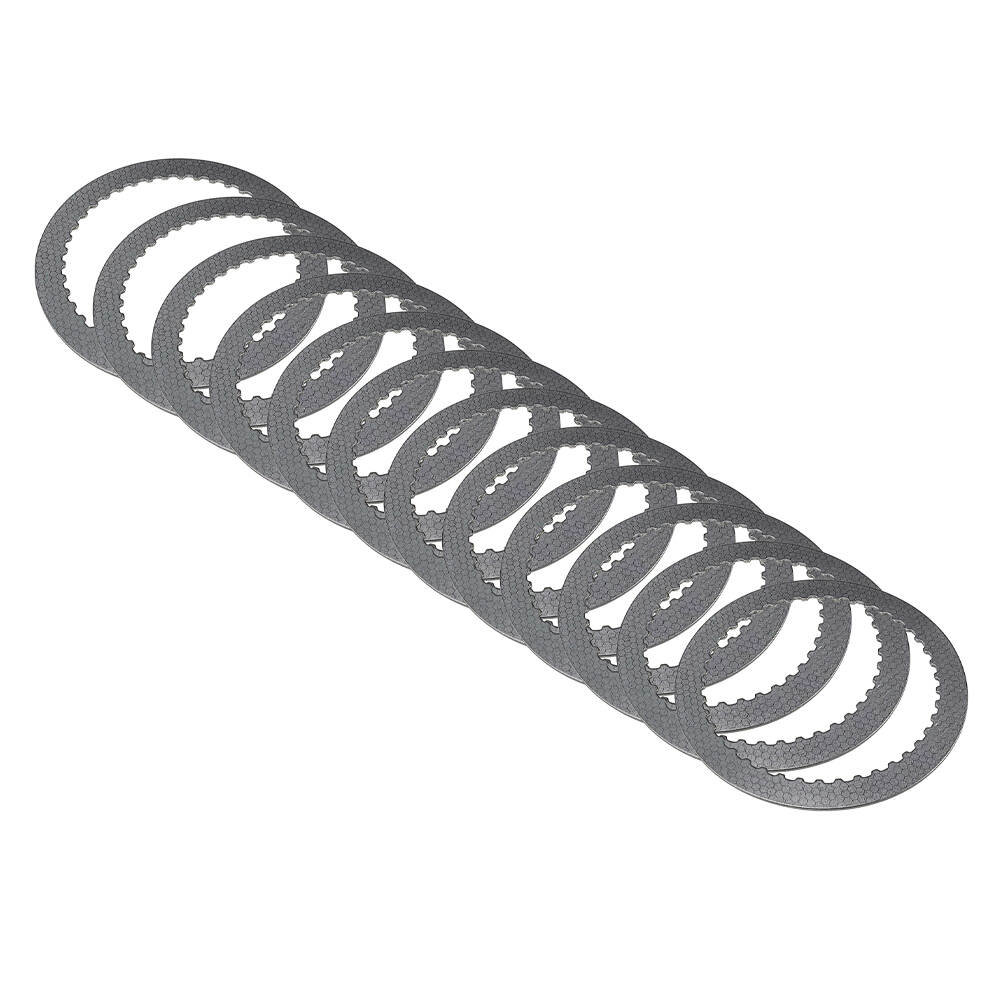
Email format error
Email cannot be empty
Email already exists
6-20 characters(letters plus numbers only)
The password is inconsistent
Email format error
Email cannot be empty
Email does not exist
6-20 characters(letters plus numbers only)
The password is inconsistent


When you hop into your car and shift it into drive, the smooth transition between gears is often taken for granted.
Whether you're cruising down the highway or accelerating at a green light, your vehicle’s transmission is working tirelessly behind the scenes.
It ensures that you can do so seamlessly.
But have you ever wondered what makes that smooth gear transition possible?
This is especially true in cars with automatic transmissions.
One critical component plays a vital role in this process: the automatic transmission steel kit.
It might not be the most glamorous part of your car.
However, it is certainly one of the most important.
In this blog, we’ll dive into the world of automatic transmission steel kits.
We’ll discuss what they are, how they work, and why they’re so essential.
Whether you're a car enthusiast or someone simply looking to learn more about your vehicle, this blog will provide you with all the information you need.
Before we go into the intricacies of how they work, let’s start with the basics.
What exactly is an automatic transmission steel kit?
An automatic transmission steel kit is a collection of steel components used in the transmission system of a vehicle.
These components typically include steel friction plates, steels (or "steels" as they are often called in the industry), clutch steels, and other metal parts.
These parts are crucial for the functioning of an automatic transmission.
The steel kit works alongside other components like the hydraulic system, sensors, and electronic controls.
It ensures that the transmission shifts smoothly and efficiently.
The materials used in these kits must meet very high standards.
They are exposed to extreme friction and heat during operation.
Steel is the preferred material due to its durability, strength, and ability to withstand high temperatures.
Steel also avoids warping or deteriorating under pressure.
When it comes to automatic transmissions, the steel kit is a fundamental part of the system.
Here’s why:
Durability and Longevity:
Steel is known for its strength.
Automatic transmission components need to withstand constant friction and pressure.
Over time, these parts can wear down.
However, the right steel components will last longer.
They will continue to perform at their best.
Smooth Shifting:
One of the key tasks of the transmission system is to shift gears smoothly.
The steel components in the transmission kit ensure that the friction plates grip and release properly.
This results in smooth gear transitions and improved driving performance.
Heat Resistance:
Transmissions generate a lot of heat during operation.
Steel can handle those high temperatures better than many other materials.
Without proper heat resistance, your transmission would overheat.
This could cause significant damage and potentially lead to costly repairs.
Improved Performance:
Using high-quality steel parts in an automatic transmission helps to optimize the performance of your vehicle.
Whether you’re towing heavy loads or navigating steep hills, the transmission kit helps to deliver the power you need.

An automatic transmission is a complex system.
However, the steel kit itself is made up of a few key components.
Let’s take a closer look at these parts:
Clutch Steels
These are the parts that come into contact with the friction plates during gear shifts.
They help to transmit power from the engine to the wheels.
This ensures that the vehicle accelerates and decelerates smoothly.
Friction Plates
These plates create the necessary friction to engage and disengage the various gears in the transmission.
When combined with the clutch steels, they form the core of the transmission's shifting mechanism.
Input and Output Shafts
These shafts are responsible for transmitting the rotational force from the engine to the wheels.
The steel kit typically includes steel shafts that are both strong and resilient to wear and tear.
Snap Rings and Retainers
These small but important components help keep everything in place.
Snap rings and retainers ensure that the steel components remain securely in the transmission system.
This prevents them from coming loose during operation.
Valve Body Plates
While not always included in every kit, valve body plates can also be part of a comprehensive transmission steel kit.
These plates help control the flow of fluid to different parts of the transmission system.
The working mechanism of an automatic transmission is fascinating.
The steel components in the transmission kit serve a crucial function.
They control how power is transferred from the engine to the wheels.
They also ensure that the shifting between gears is smooth and seamless.
Here’s a simplified explanation of how these steel kits operate within the transmission:
Power Transfer:
The engine generates power.
This power needs to be transferred to the wheels.
The steel components in the transmission work to engage and disengage various gears.
The clutch steels and friction plates work together to control this power transfer.
Hydraulic Fluid:
The transmission relies on hydraulic fluid to help engage the steel components.
The fluid also provides the pressure needed to shift gears.
As the transmission fluid is pumped through the system, it pushes the friction plates and clutch steels into place.
This allows the gears to engage and disengage.
Shifting Gears:
When you accelerate or decelerate, the transmission’s control unit sends signals to the steel components.
These signals instruct the steel components to shift the gears accordingly.
The friction plates and steels interlock, allowing for the desired gear change.
The steel kit’s role is to provide the necessary friction and resistance to ensure the gear change happens smoothly.
Heat Dissipation:
During all these processes, the transmission generates a significant amount of heat.
The steel components are designed to handle these high temperatures.
This ensures that the transmission doesn’t overheat or malfunction.
When it comes to sourcing parts for your vehicle’s automatic transmission, the quality of the steel kit you choose can make all the difference.
This is where working with a reputable automatic transmission steel kit supplier becomes essential.
A good supplier will offer high-quality steel kits that are made with precision and care.
Here’s why working with a trusted supplier is so important:
Durability and Reliability:
A quality steel kit supplier ensures that all components meet the industry’s highest standards.
This means that the parts are more likely to withstand the wear and tear of everyday driving.
It reduces the need for frequent repairs or replacements.
Expert Guidance:
An experienced supplier can provide valuable advice on which steel kit is best suited for your vehicle model.
With so many different transmission types and configurations, it’s crucial to get the right parts for your specific car.
Competitive Pricing:
A reputable supplier will offer competitive prices without compromising on quality.
This can save you money in the long run by reducing the need for costly repairs and replacements.
Access to a Wide Range of Kits:
Different vehicles require different transmission parts.
A reliable supplier will offer a wide range of automatic transmission steel kits.
These kits will suit various makes and models, ensuring you get exactly what you need.
Long-Term Performance:
High-quality parts mean better long-term performance for your vehicle.
When your transmission system is functioning properly, your car will run more smoothly.
You’ll experience fewer breakdowns or issues related to the transmission.
Like any mechanical part, the components of an automatic transmission steel kit can wear out over time.
Some common signs that your steel kit may need to be replaced include:
Slipping Gears:
If your vehicle’s transmission feels like it's slipping out of gear or hesitating when shifting, it could be due to worn friction plates or steels.
Hard Shifting:
If your car is struggling to shift smoothly between gears, this could indicate that the steel components are no longer functioning as they should.
Delayed or Rough Shifts:
If the transmission is slow to engage or you feel a rough jolt when shifting, it might be time to inspect the steel kit.
Transmission Overheating:
Excessive heat can cause the transmission to fail.
If your transmission is running hot or you notice a burning smell, the steel components may be damaged and in need of replacement.
The automatic transmission steel kit is one of those car parts that you don’t often think about.
However, it’s essential to keeping your vehicle running smoothly.
From ensuring smooth gear transitions to providing heat resistance and durability, these steel components are critical to the overall performance of your vehicle’s transmission.
Whether you’re replacing a worn-out steel kit or just curious about how your transmission works, understanding these components gives you a deeper appreciation for the technology that powers your car.
When the time comes to replace parts, working with a trusted automatic transmission steel kit supplier ensures that you’re getting quality, reliable components.
These components will keep your vehicle performing at its best.
So, the next time you shift your car into drive, remember to thank the steel kit.
It’s the reason you can do it with ease!